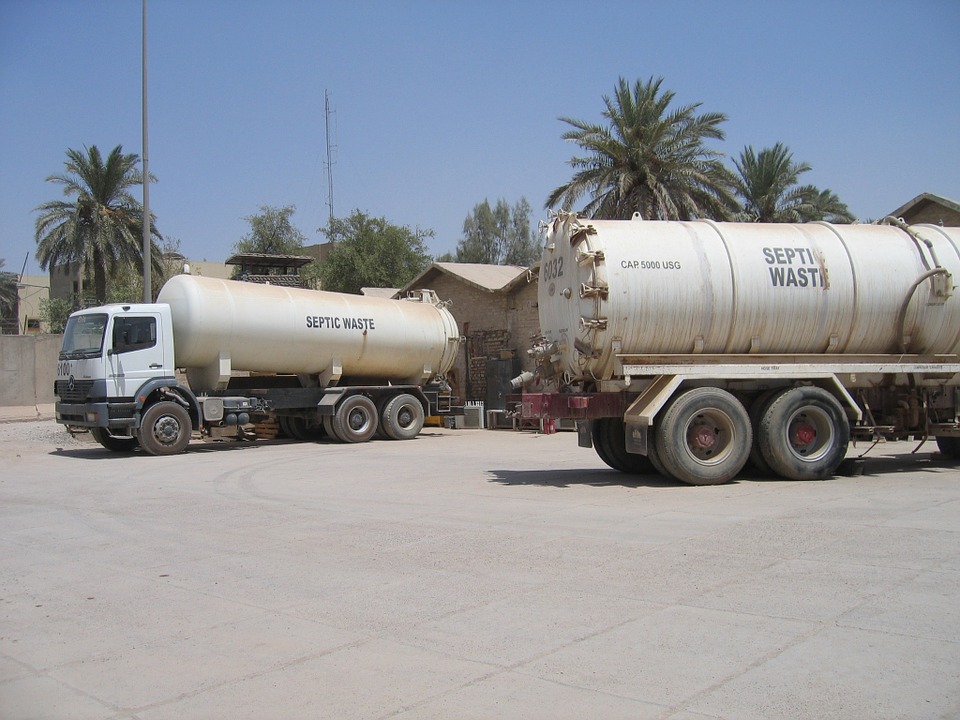By Taylor Schaefer, staff writer for Save The Water™ | August 7, 2014
Septic systems have been put in place all around the United States since 1883. While these systems are generally a safe and effective way of treating wastewater, they tend to malfunction when they are installed in improper soil such as sand or clay. When the septic systems fail, microbial bacteria and pollutants can move through the soils laterally or form ponding that is due to polluted liquids seeping to the surface.4 Coastal areas along the East and West coasts of the United States seem to experience higher levels of water contamination related to septic tanks. Some of the most common places this occurs are in Florida, Maryland, North Carolina, and Georgia.
Risk of Contamination
Research has shown that having more than 0.61 septic systems per hectare becomes an issue involving fecal contamination. Also, 0.39 systems per hectare have shown to produce nutrient- based contamination near coastal areas.4 This can develop into a major issue because when septic systems are placed near drinking wells, surface water bodies, and coastal areas, the system’s drain fields that are less than 50 meters from surface waters greatly increase the chances of pollution.4
Not only do these systems pose a greater risk of contamination, many places located on the East coast of the United States have shown improper treatment of sewage and pollution. Ammonium and phosphorus are two commonly documented pollutants caused by fecal microbes, which are major concerns to human health and the local ecosystem.4 If ammonium and phosphorus find their way into drinking water at high levels, they are easily recognizable by their foul odors and unpleasant taste.
Even properly functioning septic systems can cause contamination during periods of extreme weather. This creates excessive moisture within the soil, not allowing enough time for the wastewater to be treated before it interacts with the environment.1 A study recently done by the UGA Young Scholar Program in 2010 documented the change in wastewater before and after it is released into the soil.1 This study found that, over the course of one month, the concentration of the bacteria E.coli increased. Further research notes that it is expected to increase more during the hotter months of the year.1 This suggests that E.coli and other harmful bacteria could be introduced into the soil in large quantities, thus saturating the soil’s absorption capacity and posing major concerns to public health and the environment.1
Best Locations for Septic Systems
Although septic tanks can prove to be an effective way to treat and to dispose of wastewater, it is important to recognize which locations are most suitable for placement. These studies clearly show that septic systems should not be installed in coastal regions where the soil is either too porous or too impermeable to allow for proper treatment of wastewater before it enters the groundwater table.4 In those areas, there are alternatives to traditional septic systems such as a mound system, which is considered an engineered drain field and is used in those specific regions. With inadequate treatment of sewage and pollutants, the safety of the surrounding population and ecosystems are put at a great risk.2
References
- Dominique Appling, Mussie Y. Habteselassie, David Radcliffe and James K. Bradshaw. July 2013. “Preliminary Study on the Effect of Wastewater Storage in Septic Tank on E. coli Concentration in Summer.” water. http://www.mdpi.com/2073-4441/5/3/1141/htm
- James C. Converse and E.Jerry Tyler. January 2000. “Wisconsin Mound Soil Absorption System: Siting, Design and Construction Manual #15.24.” http://www.soils.wisc.edu/sswmp/SSWMP_15.24.pdf
- John Sawyer. May 21, 2008. “Surface Waters: Ammonium is Not Ammonia – Part 3.” Integrated Crop Management News, Iowa State University. http://www.extension.iastate.edu/CropNews/2008/0502JohnSawyer.htm
- Michael A Main. 2013. “Septic Systems in the Coastal Environment: Multiple Water Quality Problems in Many Areas.” Monitoring Water Quality.http://bit.ly/2rkJzzZ




